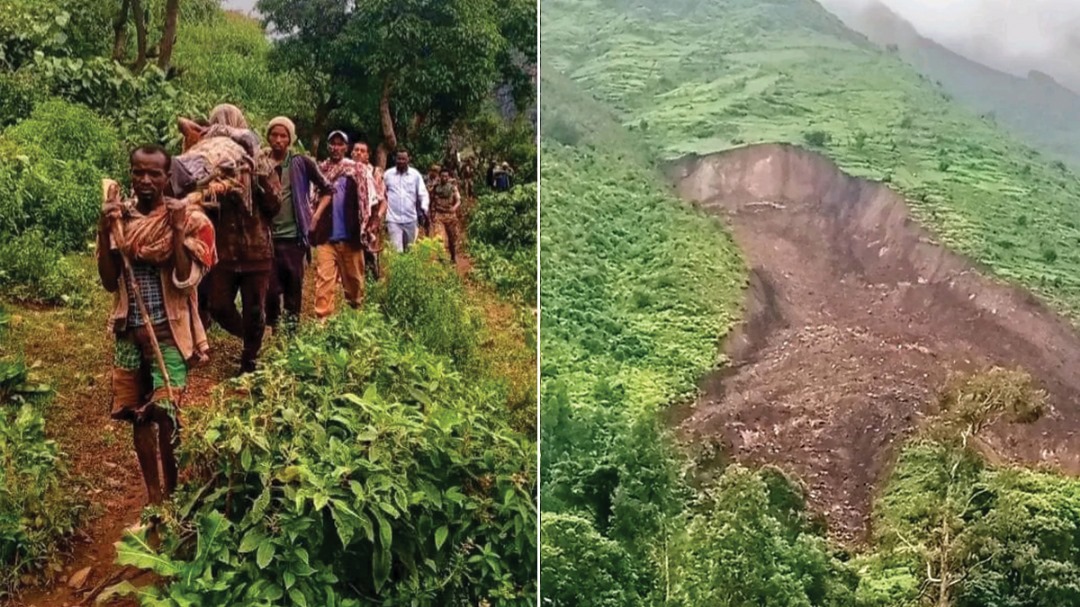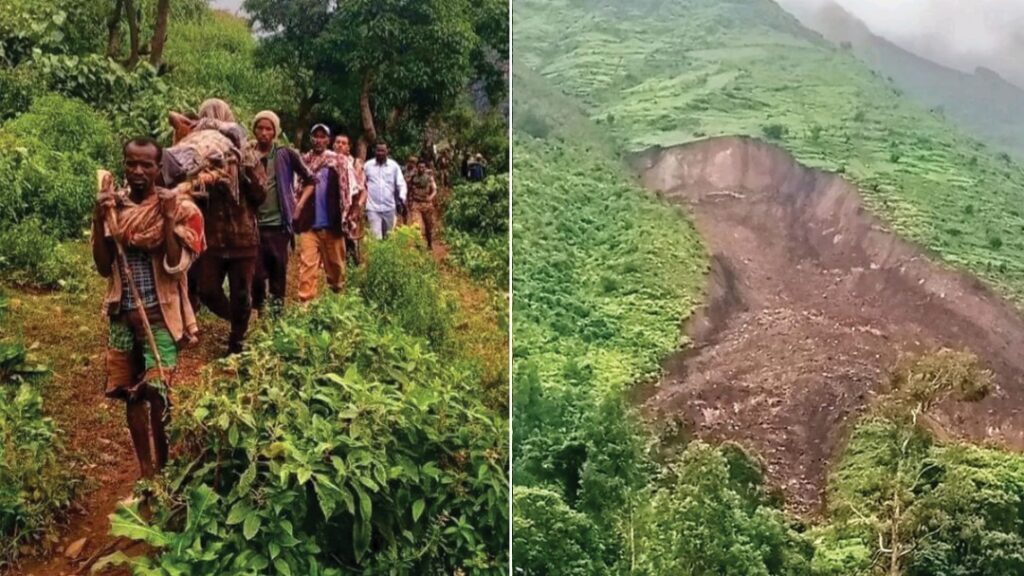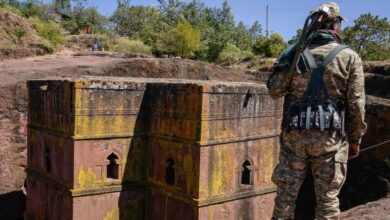Amhara Region Faces Humanitarian Crisis: 400,000 at Risk as Landslides and Floods Devastate Ethiopia

Addis Ababa – The Amhara Disaster Prevention and Food Security Commission has issued a warning that up to 400,000 people across eight zones and 34 districts in the region are at risk of natural disasters due to this year’s intense rainy season.
The Amhara Disaster Prevention and Food Security Commission has issued a warning that up to 400,000 people across eight zones and 34 districts in the region are at risk of natural disasters due to this year’s intense rainy season.
Commissioner Tesfaw reported to state media that the heavy rains have already triggered natural disasters, including floods and landslides, in areas such as North Gondar, South Gondar, and Wag Hemra zones. The situation has become dire in several areas, with significant loss of life and extensive damage to homes and farmlands.

In the Telemt district’s Abina Kebele area, a catastrophic landslide recently resulted in the deaths of 10 people and displaced 2,949 others. Similarly, in the Gondar zone, another landslide claimed 23 lives and forced thousands to flee their homes. These incidents are part of a concerning trend of extreme weather events increasingly affecting the region.
Commissioner Tesfaw reported to state media that the heavy rains have already triggered natural disasters, including floods and landslides, in areas such as North Gondar, South Gondar, and Wag Hemra zones. The situation has become dire in several areas, with significant loss of life and extensive damage to homes and farmlands.
In response to these disasters, the Amhara regional government has allocated 45,000 quintals of aid to provide immediate relief to those affected in Telemt district, where authorities are already providing daily meals to the displaced.
The National Meteorology Agency has forecasted continued heavy rainfall in the region until September 10, raising further concerns. Commissioner Tesfaw highlighted that preventive measures, such as constructing flood prevention dams in 21 districts at a cost of 94.7 million birr, have been implemented. However, he cautioned that despite these efforts, 28,000 people may still face displacement.
The affected regions are among the most impoverished in the country, where years of underdevelopment and neglect have left communities ill-equipped to deal with such shocks. The displacement of thousands of people adds to the already substantial burden on Ethiopia’s humanitarian system, which is struggling to respond to multiple crises, including war and drought. Local leaders have expressed frustration over the inadequate disaster response. This growing sense of disenchantment among the affected populations threatens to further erode the government’s standing in the region.




